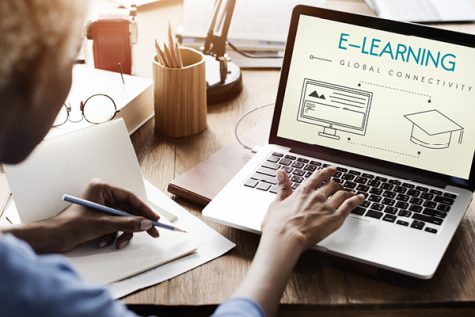Surviving Distance Learning: Tips From Teachers
Don’t procrastinate and find a balance. Two pieces of advice every student has most likely heard a million times from their teachers since UNIS started distance learning at the beginning of 2020. Most students have acclimated to this unique form of school and created their own study habits and schedules. But for those who are looking to improve their productivity, there are plenty of minor things to adopt that can help maximize your distance learning.
It’s easy to lose track of what assignments are due without teachers or classmates there to remind you. Making a checklist is one of the best and simplest ways to keep all of your homework and due dates organized. Students can set aside 15 minutes at the end of the day to write their tasks down digitally, on paper, or a combination of both. But don’t just write everything down and set it for later.
Cody Taggart, a DP Mathematics teacher at UNIS, says, “Anything that takes less than two minutes of time- don’t put it on your checklist, just complete it immediately.” This helps to reduce your cognitive load and make your to-do list seem more manageable.
However, it’s still easy to procrastinate on longer assignments. To prevent late nights of studying and cram work, DP GPS and TOK teacher Donna Frose recommends students stick to a regular school schedule.
“Start your school time at 8 o’clock and have a time that you’re going to end it at. Use that time constructively during the day, it’s really easy to [say]: ‘I don’t have a class until second or third period today so I’m just going to sleep in’, but then you’re losing all that time,” says Frose.
While it’s tempting to use free blocks as a time to relax and not think about school, it ultimately only pushes the responsibilities you have until later. Doing your assignments around school time improves the quality of your work and frees up your afternoons.
Of course, it’s still fine to take breaks. Sitting in the same chair and staring at a screen can be boring, and might make it hard to focus. What may help is physical activity, something that, “can improve your cognitive health—helping you think, learn, problem-solve, and enjoy an emotional balance” (CDC). But that doesn’t just mean waking up early to follow a workout video on YouTube.
“If I don’t have to have my camera on… and I’m listening to something or just watching something, I wander around my living room which is where my desk is so that I’m actually moving,” says Frose.
Another problem some students tend to run into is not understanding what is being taught in class. Learning without the presence of a teacher or classmates you can turn to for questions is difficult. But just because you are physically isolated doesn’t mean other people aren’t there to support you.
“In distance learning, we know that there are some gaps and we really want to support students but we also feel like we’re behind a closed door sometimes… I just worry that sometimes students are overlooking how teachers will be flexible and supportive and try and help them,” says Taggart.
Emailing a teacher may seem like a precarious task, but it may help more than you think. And if you need someone to look over your papers or bounce ideas off of, you can easily turn to a classmate, parent, or sibling.
Taggart recommends finding a singular point person as, “That person is gonna learn a lot more about you as a student individually and then you can have that ongoing support.” And if you choose another student, you might be able to offer advice to them and get to know them better as well.
Distance learning has been a difficult process for everyone, but it is important to know that there are always new strategies you can pick up to make sure you stay productive and still have time for your hobbies.



